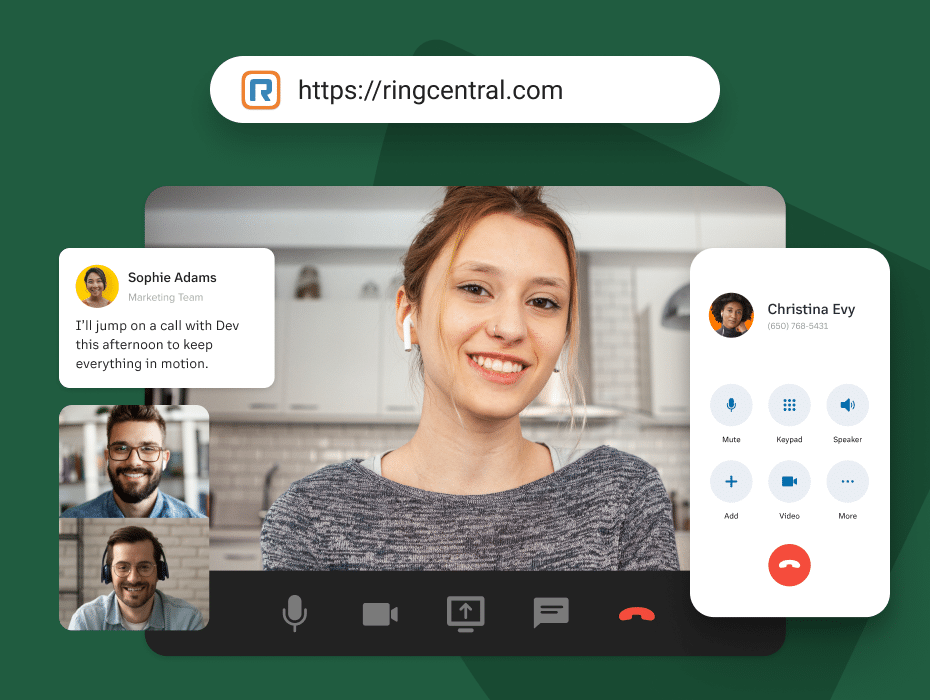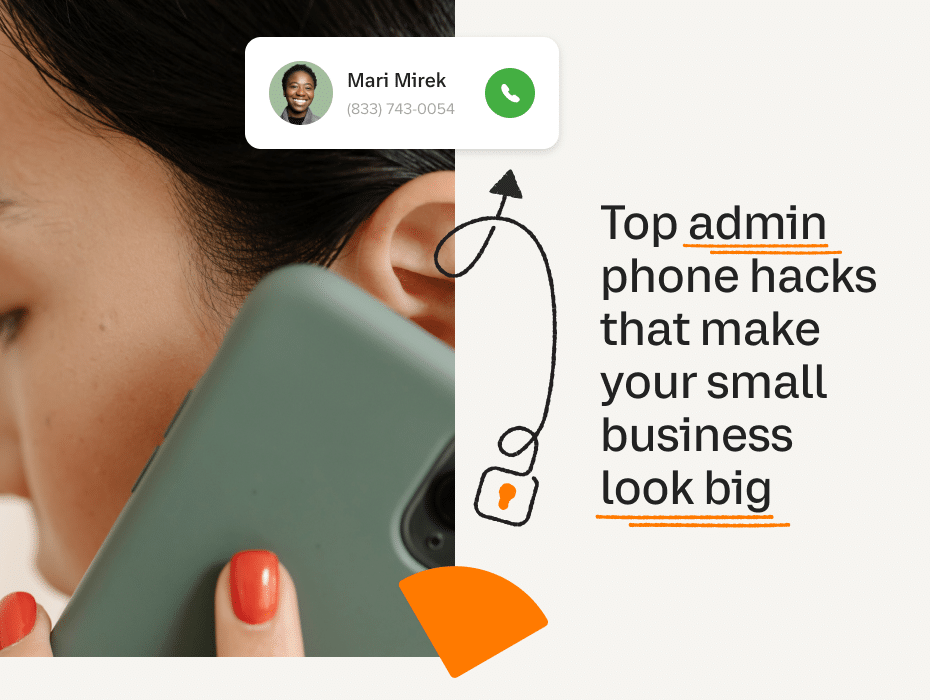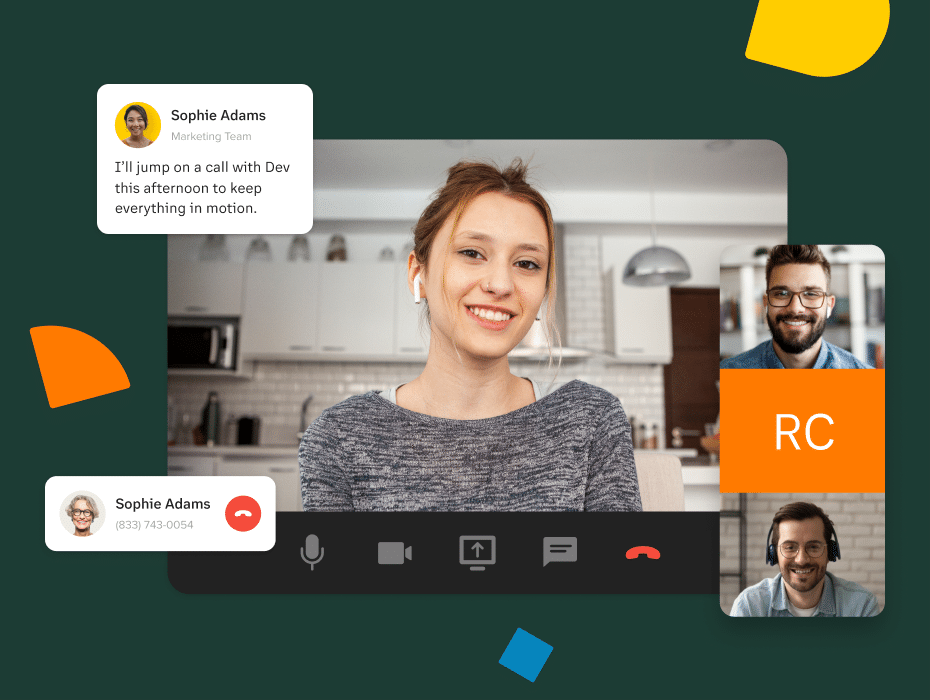The nature of sales has evolved dramatically over the past few decades. Where salespeople used to close deals with clients in person, they now often spend more time contacting leads through phone calls, emails, and video meetings. With 80% of a day being spent on the phone, how can sales improve themselves?
And if the last two years are any indication, the sales process will continue trending towards digital as more employees and clients prefer interacting online.
⭐ What is unified communications? ⭐
Everything you need to know about enterprise-grade communications. For beginners.
So let’s say you want to upgrade your landlines and mobile devices with VoIP or advanced cloud PBX systems. How do you choose a solution that best fits the needs of your sales team?
Here are several phone features to look for:
1. CRM integrations and calling campaigns
Customer relationship management (CRM) solutions allow you to build a list of prospects based on a combination of criteria such as geographic location, funnel stage, and lead score. You can even integrate these CRM campaigns into calling software that specific salespeople can target and dial.
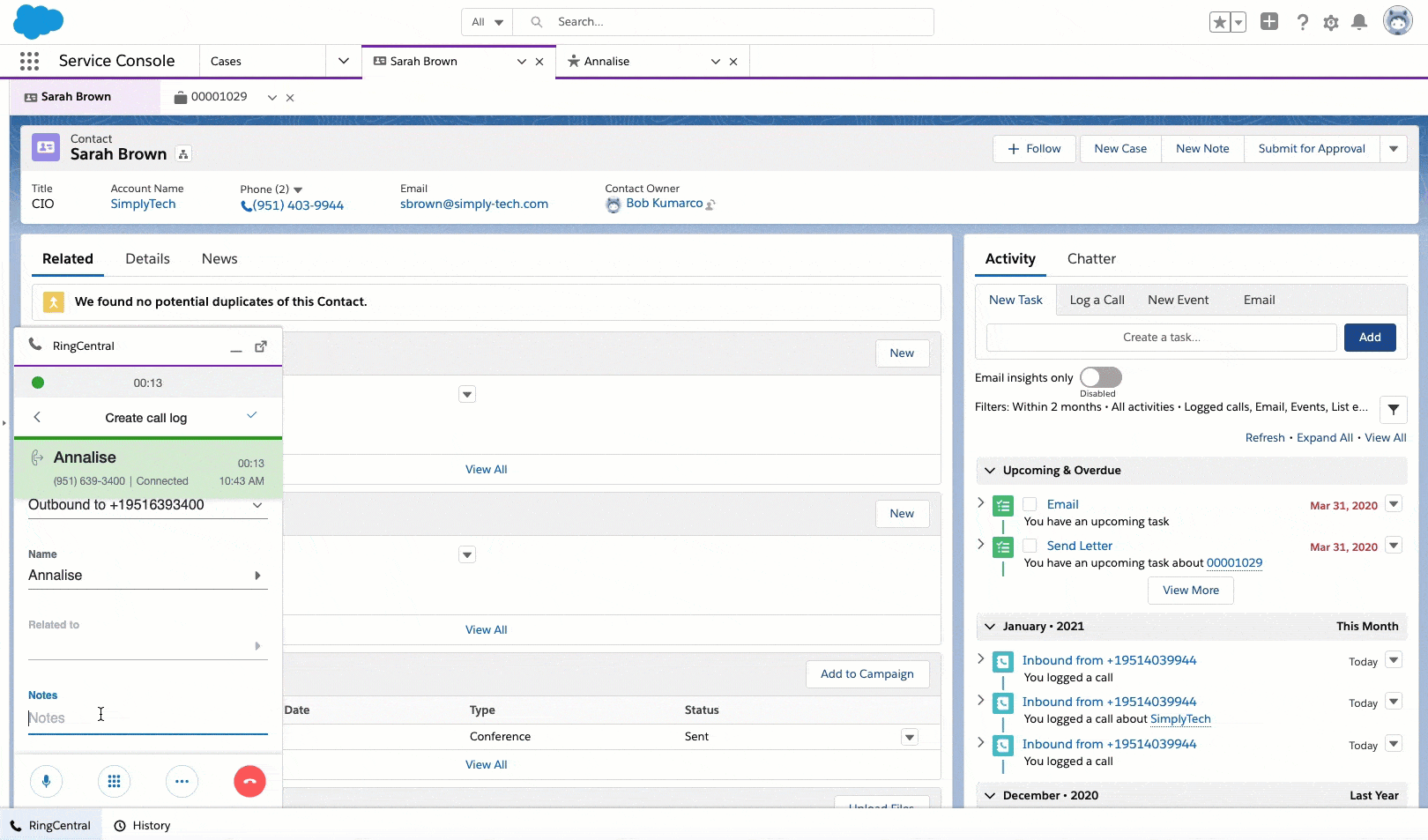
For example, RingCentral integrates with leading CRMs so that logged and tracked calls can be included in the activity timelines for contacts, leads, opportunities and in CRM reports.
Our CRM integrations allow sales reps to make calls directly from the CRM with one click dialing to stay focused in one app and get through their daily grind in a concentrated block of time.
2. Click-to-dial
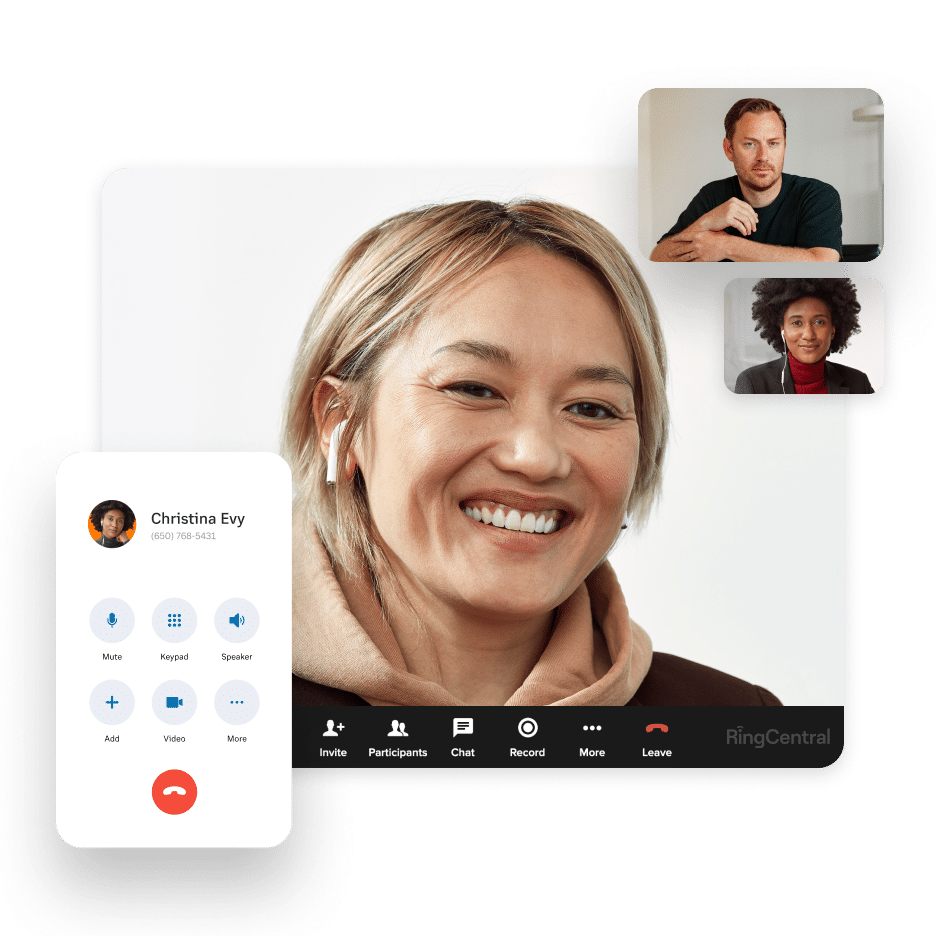
The ability to call a number with a single click is a huge timesaver for sales reps. Anything that saves an incremental number of seconds per call adds up, allowing reps to make several extra calls per hour and hundreds more per week.
At the very least, it makes a mundane aspect of their work a little easier, allowing them to dedicate more energy towards connecting with and nurturing their clients.
3. Call recording
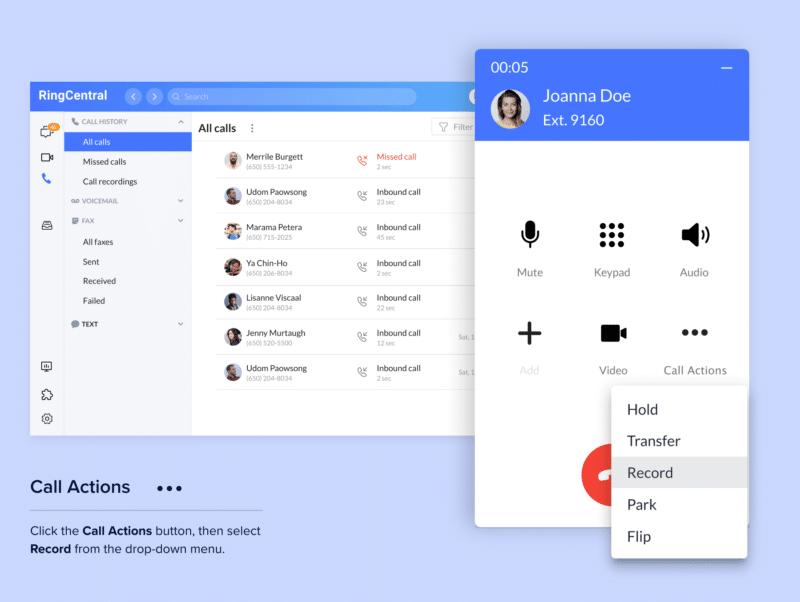
Recording calls allows agents and managers to review it later for customer insights, training, or simply to have a historical record.
This helps identify winning sales strategies and any shortcomings. Just be sure to make customers aware that the call will be recorded beforehand. There are many ways to record your calls on RingCentral – you can record on desktop or your mobile device. Read our blog on How to record a phone call—whether you use Android or iPhone.
4. Reply with a voice message
Whether you’re in a meeting or a noisy location, it’s not always convenient to answer a call. But if the call came from an important customer, you might want to answer it.
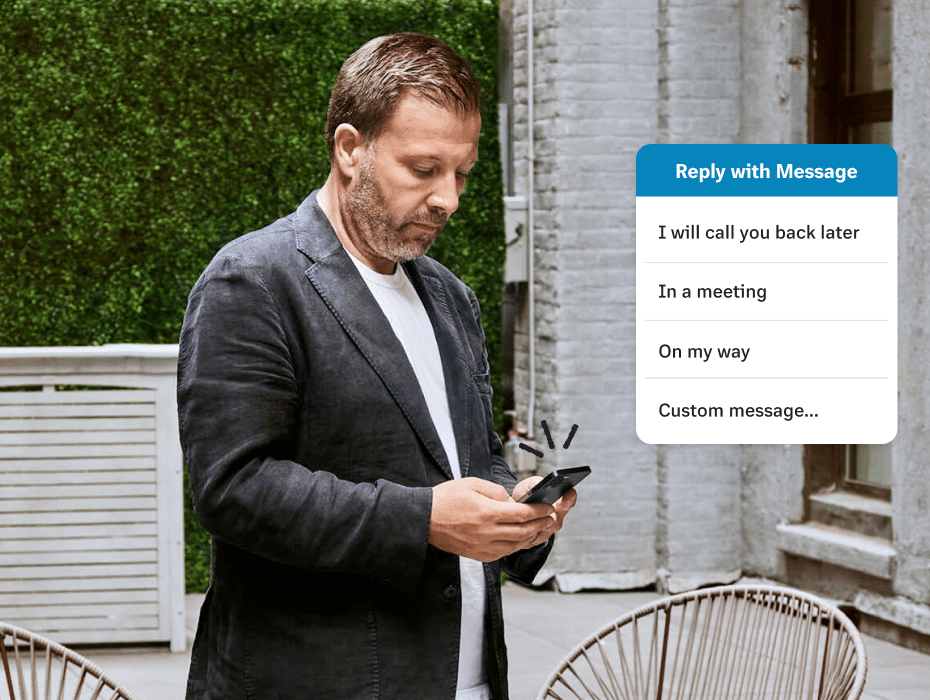
In RingCentral you can reject an incoming call and reply to the caller with a predefined, custom voice message or text-to-speech—all with the tap of a button. Your caller can also respond to your message automatically.
When they receive your message, they’ll have the choices such as “Press 1 to Repeat the message” and “Press 2 to Leave a voicemail.”
5. Forwarding voicemails received
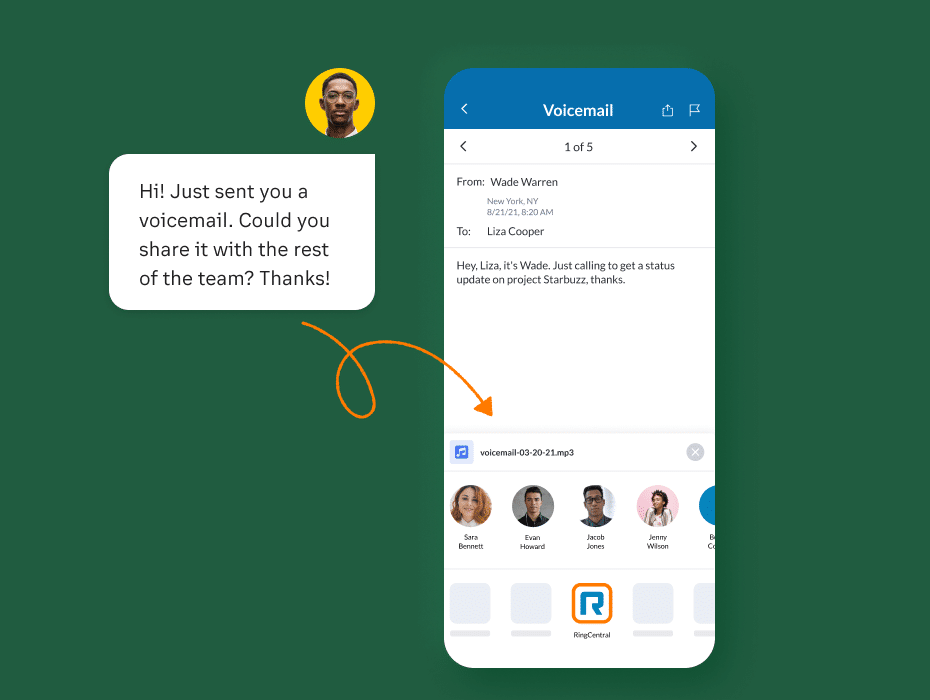
When a customer calls while you’re on the go, you can forward the voicemail to other team members to action it immediately. Your customers get their questions answered while you continue focusing on your other tasks.
6. Local outbound caller ID / International IVN numbers
If you are running a national or global calling campaign, conversion rates are much higher for local numbers than toll-free numbers. Think about it, how often do you answer 1-800 numbers when they call you?
Further, if you list a phone number for inbound inquiry, customers are more likely to call in if the phone number listed is local to them.
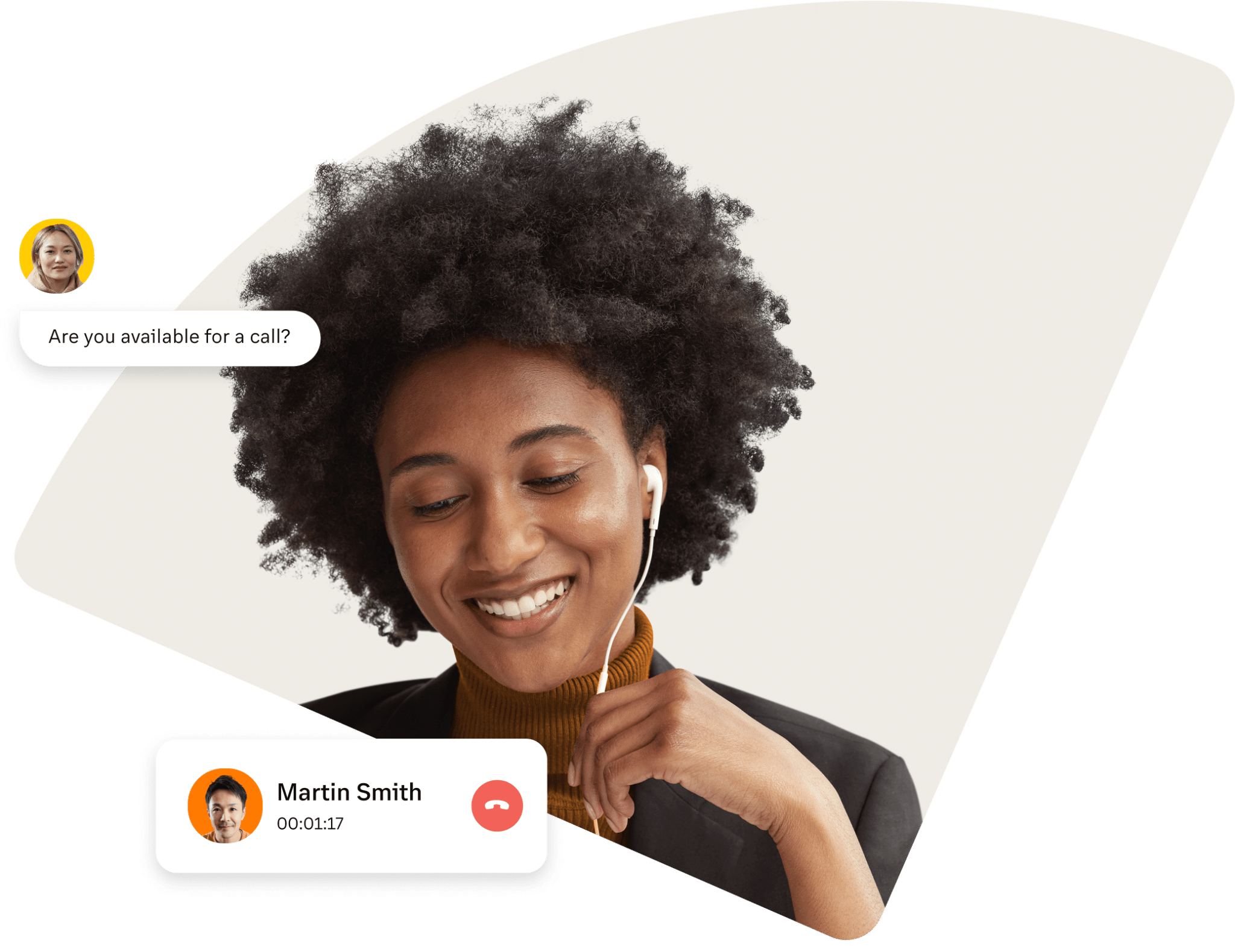
In RingCentral, reps can choose an available local number before initiating calls to that area, providing the advantage of locality without actually being there. And there’s over 110+ countries to choose from.
Reach your global customers or test global markets before making a bigger investment. Provide them the service they deserve—wherever you are.
7. Live call monitoring
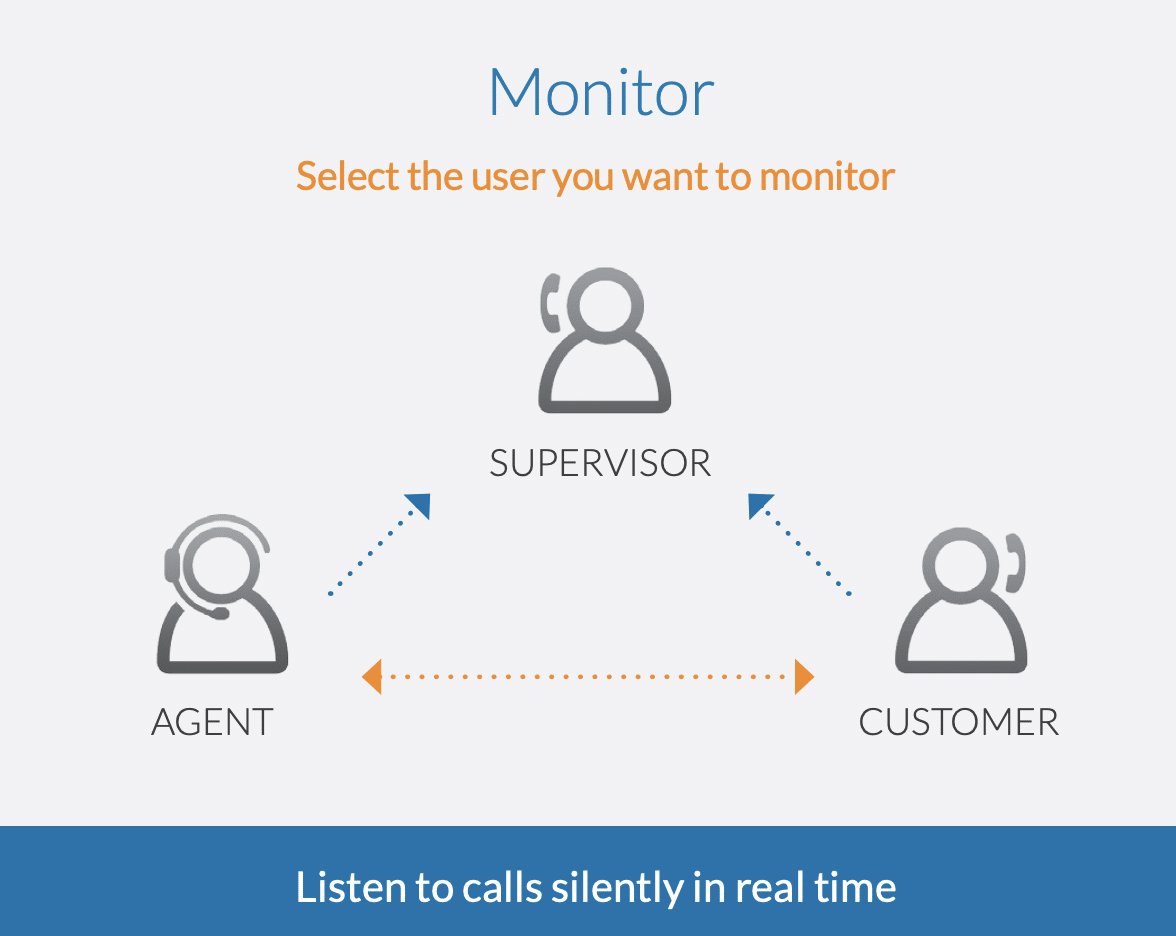
The ability for sales managers to listen in on calls in real time provides opportunities for course correction, especially for new agents with important leads and existing clients.
This can prevent an unexpected situation from spiraling out of control or simply provide a learning experience for an agent in training.
8. Call transfers, forwarding, and routing
Once in a while, you’ll encounter callers who want to speak with another agent. Perhaps you have a subject matter expert on your team and you get a very specific question you don’t have the details on.
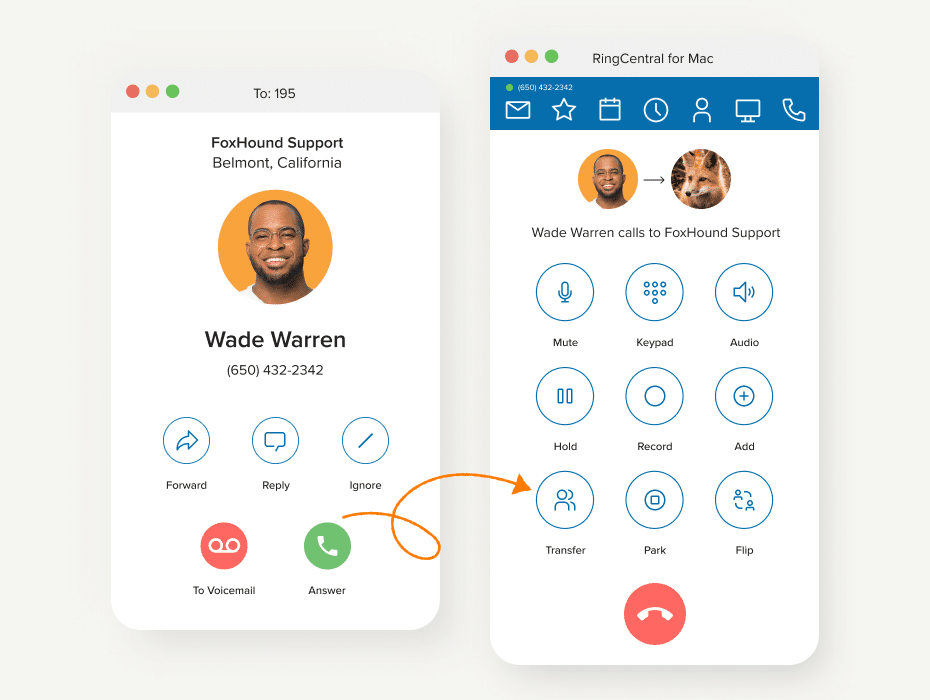
Instead of having them sit and wait while you find the appropriate information, simply transfer the call to the right colleague in two clicks.
Need to head out of the office but still want to take calls? Set up call forwarding so customers can still reach you.
9. Call Flip
Imagine you have to get the kids from school or run a time-sensitive errand, but you’re stuck in a meeting with a customer that’s running long.
To get both things done at the same time, there’s no choice but to disconnect from your computer and call back from your smartphone—and you’ll likely miss a couple of minutes and potentially cause some annoyance to the customer in doing so.
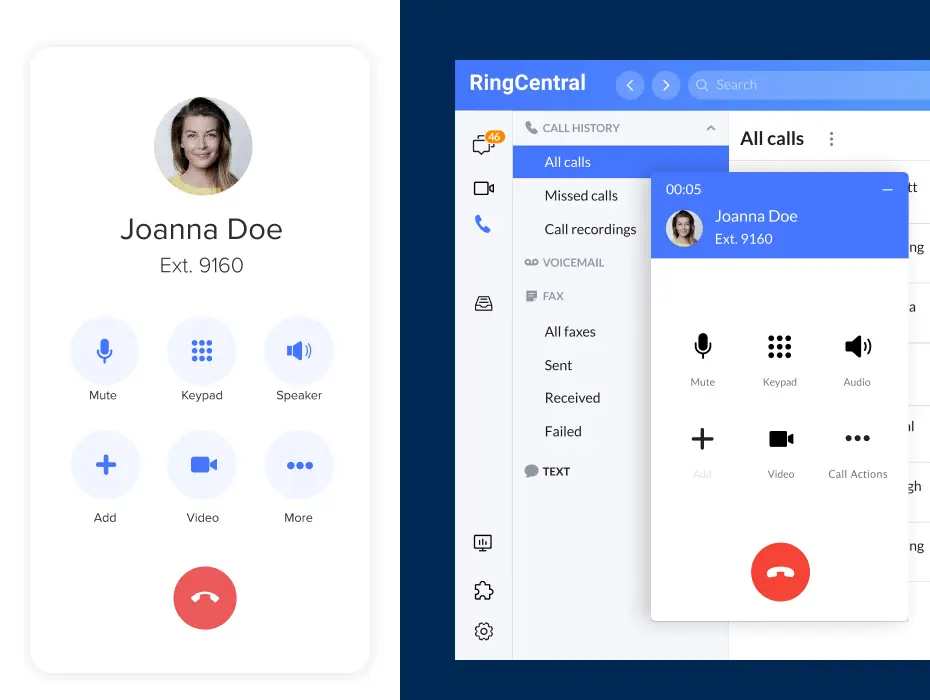
Call Flip allows you to switch devices during an audio or video meeting with a single click—without losing a second of the meeting or your customer even knowing. As long as you’re logged in to the RingCentral app on both devices, the switch happens instantly as if you never left.
10. Voicemail transcription
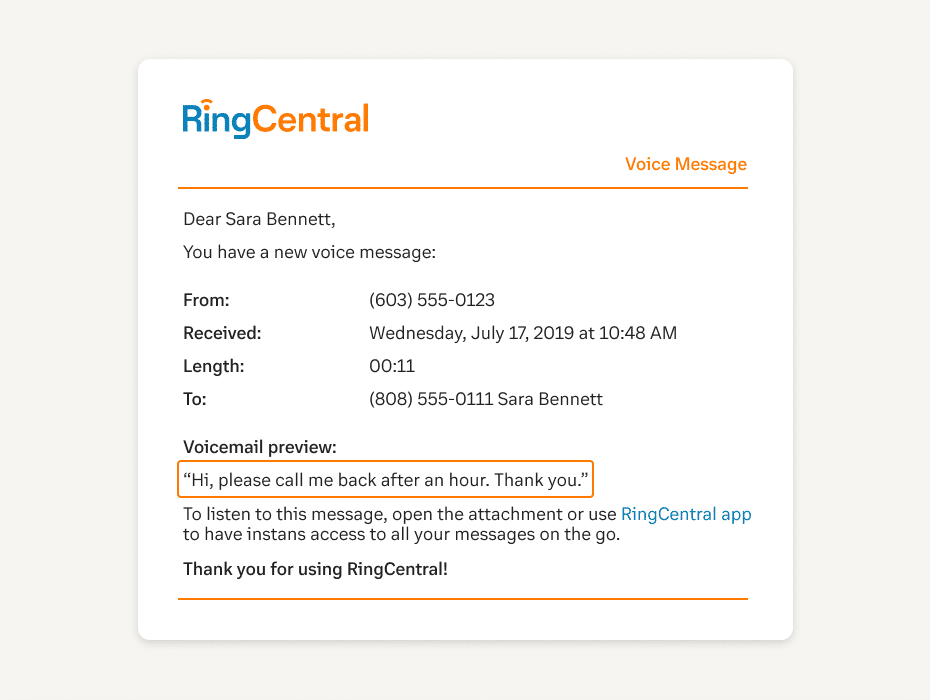
In RingCentral, you can set up your voicemails to automatically transcribe in your email if you prefer to read instead of listen.
This is often a faster way for a sales rep to catch up on their voicemails when they are on the go between customer meetings.
The very important voicemails can be determined by a quick skim and they can double click to listen to those ones first, while saving the less urgent voicemails for later.
11. Use various phone numbers with RingOut
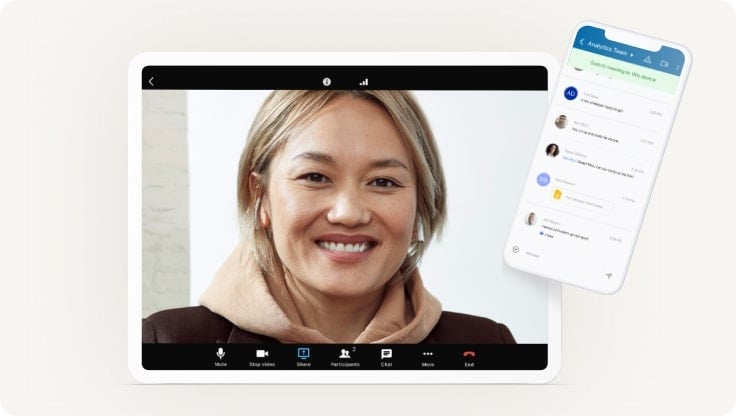
RingOut works by dialing your existing phone number—a cell phone or a landline, for example—from your RingCentral number. When your personal phone connects the call, your RingCentral number displays in the recipient’s caller ID field.
That means you can make calls through RingCentral’s servers without your personal phone numbers showing. It’s great for maintaining confidentiality or setting boundaries between your professional and personal lives.
12. Call logging
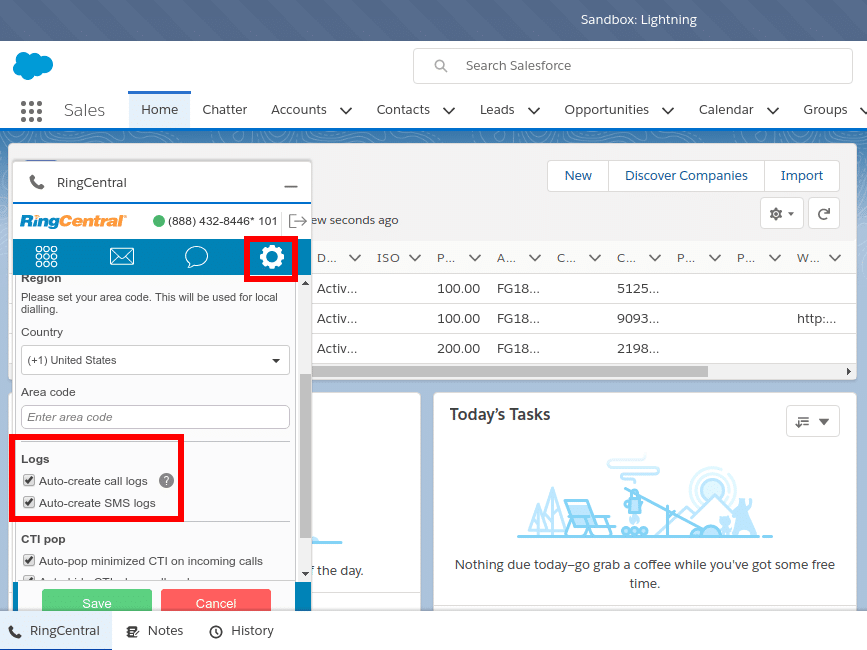
Calling software should automatically log call times, status, duration and contact info in the activity timeline of the caller or related organization. Available in the log should be any notes the rep add during the call.
You can also integrate call logging features with AI software to automatically transcribe the whole conversation into your CRM. Keep all your data in one place.
Calls that relate to two or more contacts or organizations should be logged for each respective record without requiring much rep input.
13. Call analytics & reports
Calling software can leverage internal data collection to provide insight on the real-time and historical activity and performance of individual agents, groups, and the sales team as a whole.

System admins and sales managers can analyze performance using default and custom KPIs to optimize resources around periods of heaviest call volume, set benchmarks on agents’ known proficiencies, and train agents specifically for areas known to need improvement.
14. Inbound/outbound business SMS
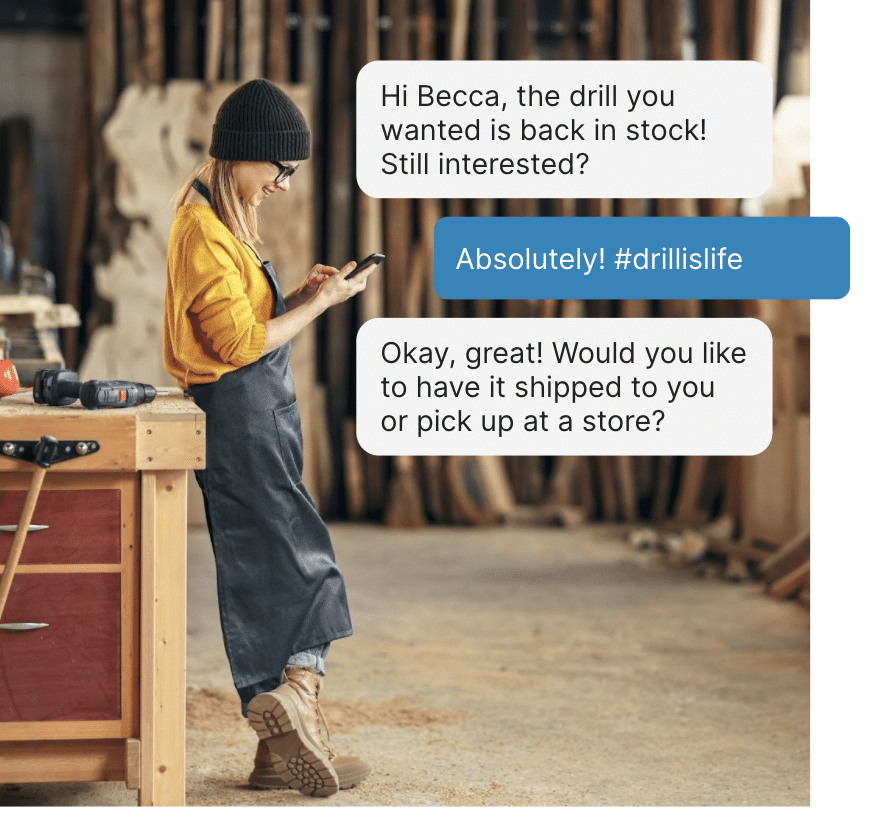
Integrating another outreach channel into your marketing and sales process gives customers the flexibility to opt-in to messages for upcoming sales, and gives your sales team the chance to interact with leads in a channel they may prefer.
Some phone solutions also allow SMS messages to be sent in bulk, while inbound and outbound texts are tracked so activity can be dissected by agent, time of day and stage in the sales funnel.
15. Switch from call to video
Face-to-face interactions make the huge difference in building a relationship, rapport, and closing a deal.
The problem is, communications and collaboration technology—separate tools and apps for calling, team messaging, and online meetings—hasn’t always helped. Switching from a phone call to a video meeting adds time, headache, and roadblocks to any sales call.
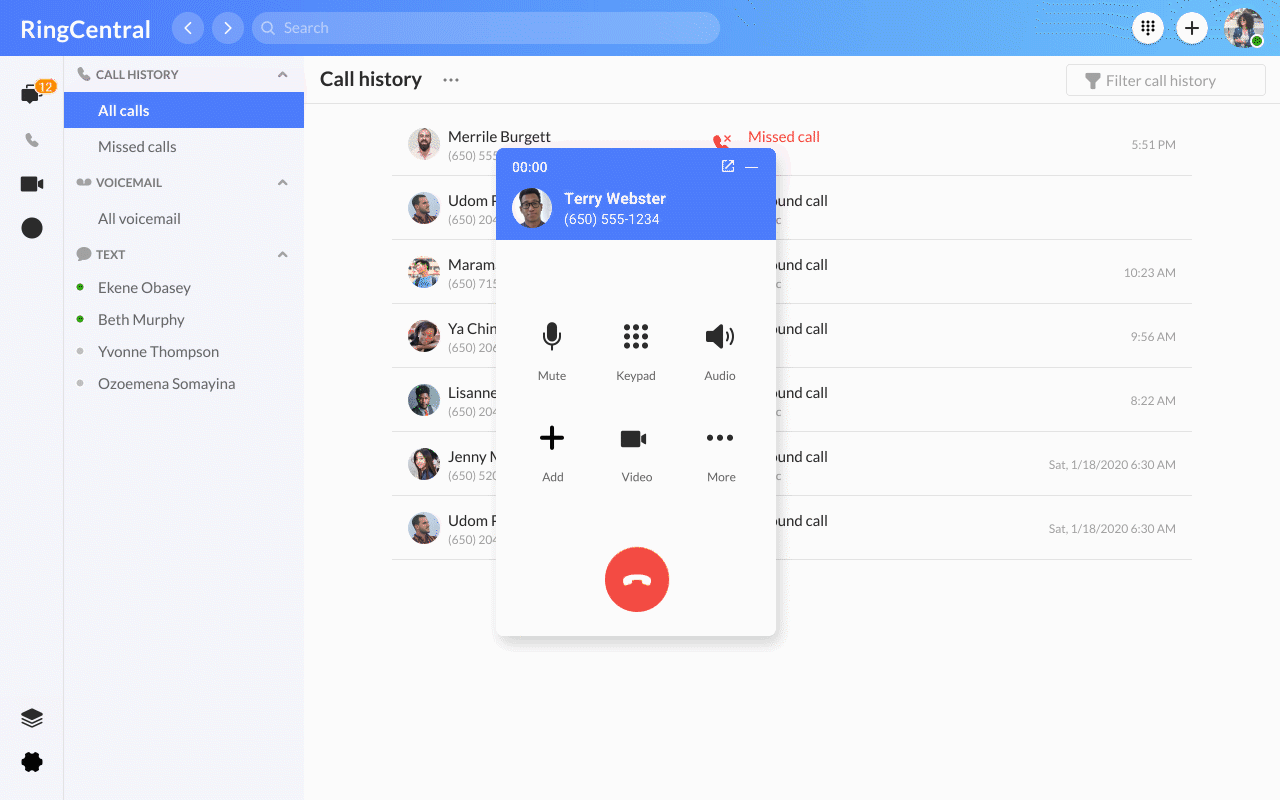
That’s why with RingCentral, you can switch from a phone call to a video call in just two clicks. This allows you to see face to face, share screens, and use all of the features available in RingCentral Video while staying connected to the other caller the entire time.
Originally published Feb 16, 2022, updated Jul 25, 2024


